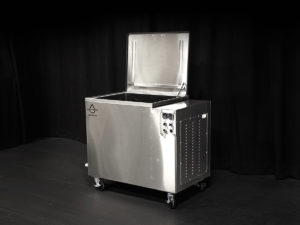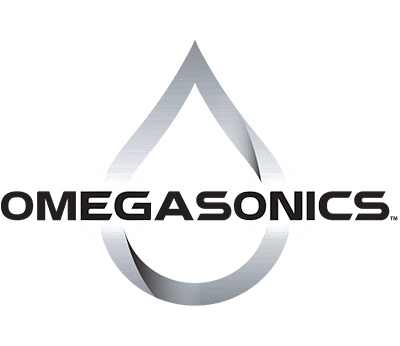There are a lot of myths about ultrasonic cleaning.
Over the years, it seems I’ve heard it all regarding ultrasonic cleaning. I don’t know where or how the mistruths come about, but there is an enormous amount of misinformation in the public domain about best ultrasonic cleaners and what they can and can’t do.
Omegasonics highlights some of the many myths that abound concerning ultrasonic cleaning technology, and attempt to set the record straight in this blog post.
In the interest of equal time and fair play, I thought I’d pick out some of my favorite ultrasonic cleaner myths, and bust them right here once and for all. I’m not sure my information will get to be as widespread as the myths, but at least I’ll sleep better at night knowing I did what I could to set the record straight. So here they are:
Aluminum can’t be put in an ultrasonic cleaner – False. Almost any type of metal can be placed in ultrasonic cleaning systems as long as the type of cleaning solution is correct. I’m not sure how this myth started,but it’s not true. As long as the detergent is compatible with aluminum, it can be safely and effectively cleaned, as can magnesium, titanium, and brass.
Putting a printed circuit board (PCB) in an ultrasonic cleaner will damage the solder joints – False. Many people mistakenly believe that ultrasonic cleaners work by shaking the dirt off of parts. Obviously, that’s not how they work at all. Ultrasonic cleaning systems work by creating microscopic cavitation bubbles that dislodge contaminants from the surface of parts. Ultrasonic cleaning is in fact a very effective method of cleaning PCBs. Myth busted.
Ultrasonic cleaning doesn’t work – Again, this is false. Ultrasonic cleaning is incredibly efficient at removing contaminants when the optimal chemistry, cleaning cycle time, and temperature are used. This myth was probably started by a consumer who was trying to clean the wrong part with the wrong chemistry, or with a unit that was much too small for the article being cleaned. In any case, the statement is just not true, and hundreds of different businesses and industries are proving my point for me daily.
The longer an ultrasonic cleaner runs, the cleaner the parts get – This is actually true, but only to a certain extent. If running the cleaner for 3 minutes gets the part clean, running it for 5 minutes might get it cleaner. It’s up to the user to define how clean a part needs to be. It may be “clean enough” after only 3 minutes, or it may take the full 5 minutes until it’s considered acceptable. There is, however, only a limited amount of contamination on any given part, and once it’s gone, it’s gone. In that case, if 100 percent of the contaminants and debris are gone after 15 minutes of ultrasonic cleaning, running the cleaner an additional 5 minutes won’t remove any more debris.
Medical and dental tools aren’t sterile if they’ve only been cleaned ultrasonically – False. Many dental clinics, medical clinics, and hospitals today use only ultrasonic cleaners to clean and sterilize their tools and instruments. With the right cleaning solutions, ultrasonic cleaners can remove every trace of bacteria, mold, and protein-based contaminant that could exist on an implement. My grandmother probably perpetuated this myth; she believed that nothing was clean unless it had been soaked in boiling water. That’s old-school thinking.
Parts must be wiped clean before placing them in an ultrasonic cleaner – False… well, sort of. There is no need to remove any contaminant from a part prior to starting the ultrasonic cleaning cycle, but wiping off excess oil, grease, and dirt will minimize the amount of buildup or residue in the tank, and may help expedite the cleaning process. This myth is probably left over from the days when dishes had to be rinsed before being put in a dishwasher. Modern dishwashers effectively remove mashed potatoes from a plate whether they’re an eighth inch thick or 3 inches thick. Ultrasonic cleaners do the same thing.
These aren’t earth-shattering truths. But the ultimate truth is that ultrasonic cleaners are phenomenal cleaning devices because they work with an almost endless variety of materials, remove a very diverse range of contaminants, and do both in minutes. For ultrasonic cleaning to be effective, the chemistry, temperature, and cycle time must be right; once that ideal combination is found, almost anything can be safely and completely cleaned ultrasonically.
Shop Ultrasonic Cleaners >>>

Contact us for more information on ultrasonic cleaners. You can also find us on LinkedIn and Twitter.

